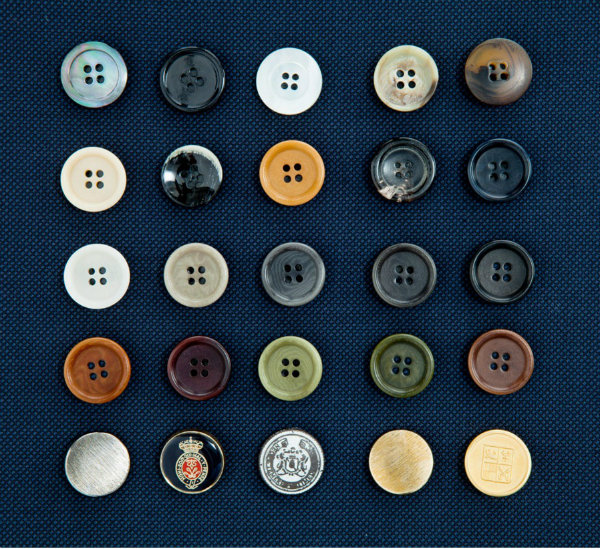The idea of getting a tailored suit has certainly already crossed your mind. But a little je-ne-sais-quoi holds you back every time, like an apprehension. Do you fear not being able to properly guide the tailor, to make a decision and you aren’t even sure of what you really want?
And yet, getting a tailor-made suit done is very simple. If you're new, simply start by asking yourself these 5 questions!
You will see that the right decisions will be obvious, especially since we must not forget that the tailor is there to guide you, based on your answers.
When you walk through the door of a master tailor, there is a good chance that the first thing he will want to know is the event for which you are planning on wearing the suit. Most of the time, men think of having a quality suit to wear on special occasions like weddings. But in reality, a tailor-made suit can be worn in the office or during a job interview.
Often times, men consider getting a tailored suit for their first time for someone’s wedding or their own. If your calendar has several weddings that may be announced during the year, then it may be time to think about one.
If you are the groom, it is better to match the suit at least to the colour of the bride's dress. In general, the groom's suit is navy blue.
If you are invited to a wedding, avoid having the same suit as the groom. Otherwise, the dress-code as a guest is more flexible. Whether you are the groom or a guest, it could also be that a dress code is imposed. In this case, it will be necessary to respect the requirements of the invitation, which simplifies your choices!

If your outings with colleagues or with friends consists mainly of inaugurations, afterworks or private parties, you may, depending on the level of solemnity, forget the tie and wear your suit jacket with jeans or a chino.
If fashion knows seasonality, it's not just due to marketing. It is quite simply because, as you will have seen for yourself, that the climate does not allow you to dress the same way in winter as in summer. The topic of seasonality goes hand in hand with the next question, which concerns the choice of fabric.
Wearing a suit in the summer can be difficult to bear if the materials are too thick, and yet for some events we don’t have the choice. Same goes for the winter as a suit that is too light can bring you health problems.

As we have said, the choice of fabric will be largely influenced by the answer to the previous question. Each season has its favorite fabric, but the choice of fabric does not stop with temperature considerations. The fabrics also have different colours and patterns. As we go through the questions, we realise that some of the answers have already been alluded. For example, a herringbone fabric is perfect for an everyday suit, while for a wedding suit the fabric is plain, navy or dark.
Not all the suits have to be plain. There are patterns such as chevrons, houndstooth, prince of Wales, tiles or stripes. The choice of fabric can also be made according to the other pieces of clothing you wear. If you choose a fabric for a work suit, think of the shoes you already have. Are they black? waxed? in natural leather? with visible or discreet stitching? Do you wear rather plain or patterned ties? The same question arises for your shirts and you can even think about the types of watch you wear or your glasses.
In addition to aesthetic considerations, the fabric evolves according to the year. Soft and light materials such as cotton and linen are preferred in summer. Autumn fabrics are more like wool and cashmere. Depending on the type of wool and the mix between different materials, the fabric is more or less warm and can also be suitable for winter or spring.

The question of the design is perhaps the most difficult or in any case, the most feared. It may be necessary to know a little bit about sewing and have a critical look in the matter to be able to give your opinion. That's why it's the tailor who will help you choose. He will take into consideration your morphology and propose a design which is adapted to your build and your morphology. The width of the shoulders is the first morphological criterion. If you are paunchy or slender, it will of course influence the cut, which will be rather straight or arched.
As for the design of the trousers, which can be straight, slim or loose, it will depend on the design of the jacket. To determine its length, trust the expert eye of the tailor who will adjust it perfectly to the measurements of your leg.
How to better define a tailor-made suit than to talk about its finishing touches, which will really make it a unique garment tailored for you.
In terms of finishing touches, many things can be considered, but it may be that the price will vary. Would you like a special lining, in silk, for example? Should the buttonhole be functional? Should the breastplate be glued or sewn? Are the buttons or pockets particular? Once again, the tailor will be there to help you finalise your tailored suit.
Finally, remember that adjustments can be made for suits and trousers to fit best to your morphology. After this last step, the tailor will give you some tips for the maintenance and washing of your suit.





